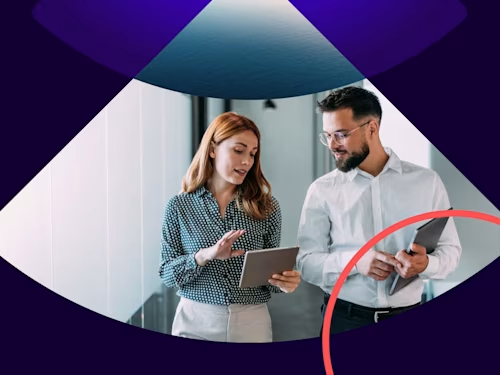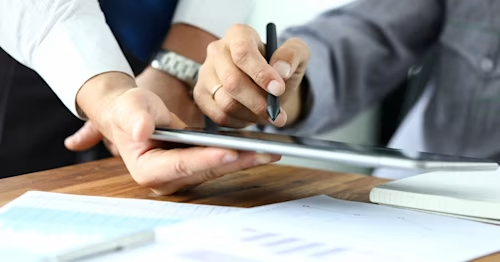
The future of electronic signatures in Britain
Read on to discover more about recommendations on future reform from the Industry Working Group on the Electronic Execution of Documents.

Recommendations from the Industry Working Group on the Electronic Execution of Documents
What is the future of electronic signatures in Britain? In February 2022, the Industry Working Group on Electronic Execution of Documents published their interim report, which made recommendations for future industry reform and set out their analysis of the current situation in England and Wales.
Technology has a much broader impact on the legal profession now than it has previously. The Industry Working Group was convened following a recommendation by the Law Commission. One of the group's aims is to demystify uncertainty around the execution of electronic signatures.
Mr Justice Fraser chairs the working group under the oversight of Lord Justice Colin Birrs, the Deputy Head of Civil Justice, and assisted by Professor Sarah Green, the Law Commissioner for Commercial and Common Law for England and Wales. Members are drawn from the technology, legal and business sectors. The work from the group will assist in informing the future use and uptake of e-signatures by the government and others. Here we look at what the future of electronic signatures in Britain may be following this report.
Current Areas of Uncertainty in Electronic Execution of Documents
The report found that in many situations, there aren't legal barriers to the adoption of electronic signatures. A key issue has been convincing users that electronic signatures are legally valid and secure. The report focuses on the following terms of reference for the future:
The current technology available for confirming the identity of an individual and for executing electronic signatures
Best practice guidelines for using electronic signatures
Prevention of 'fraud' when using electronic signatures
The report identified that although there were certain areas that would require legal reform, one of the barriers to adoption was a lack of certainty from professionals. There is either a lack of trust or users don't realise that technology is already available to do the things they need to do and that it is already legal. In the future, it's about more education, embracing use cases and accelerating the comfort level of electronic signing. The group's clear view is that electronic signatures can and should be used today and in the future on a broad scale and that members of society should have confidence in doing so.
The group wants to encourage the use of electronic execution of documents where it's more efficient and effective to do so. The report identifies simple best practice guidance based on existing technology. The group also considers that the Government acting as an "early adopter" of electronic signatures could encourage the widest possible use of electronic signatures within society.
Future reforms in law
There are currently some situations where a signature can't be properly electronically verified because of statutory requirements. This includes, for example, lasting 'Power of Attorney', the transferring of legal autonomy from one person to another. There are other situations where physical witnessing is still required, which can take extra time even if signed electronically. The benefits of electronic signatures are often lost where this is the case.
One of the significant recommendations in this interim report is that "the group supports the concept that Qualified Electronic Signatures, particularly if underpinned by a regulated digital identity trust framework, would be capable of fulfilling the same objectives as physical witnesses and attestation of documents, such as deeds."
The Covid-19 pandemic, in particular, demonstrated that the use of existing technology could be extended to accommodate issues of immediacy and lack of physical presence, such as the way that witnessing the signing of wills can currently be done remotely (whereas pre-pandemic this was not legally possible). The amendment to the current legislation for wills is in place until January 2024. The report recommends that wills continue to be witnessed electronically and remotely where possible.
Across Government and industry, there are many initiatives trying to make electronic execution simpler. Property contracts are increasingly being used because of the HMLR project. HMLR is running a pilot to evaluate Qualified Electronic Signatures as a secure electronic signing solution to digitise the conveyancing process. Hopefully, these types of changes will become more permanent in the future.
There may be a need for further law reform so that physical witnessing doesn't need to occur. For example, future use cases could include wills, court documents, cancellation of utility services, and more. Law firms and the legal community can advocate for reform so that there is an opportunity to continue to make progress.
Digital Signatures and reassurance around fraud protection
In many cases, an electronic signature is safer than a wet signature. Leading electronic signature platform providers have in-built security features, including an audit trail, authentication and identification. Digital signatures can provide higher assurance of identity and authentication and use encryption and sophisticated fraud protection practices.
The report recommends the following best practices:
"Use a signing platform that provides a minimum set of security/safety/functionality with a strong audit trail that demonstrates an intention to sign by the signatories. Such platforms should, as a minimum, include the ability of signing parties to download/retain executed documents. In particular storage, so-called 'shelf life' of documents and their audit trail details should be clearly identified by the signing platform to enable informed choice by signatories."
Digital signatures are a subset of electronic signatures, which include a third party providing identity analysis, and there is an additional seal added to the signature. Digital signing could be the solution to concerns around fraud, and the law currently provides for three levels of electronic signature. The group's view is that these levels of signature provide a useful framework. They are a Simple or Standard electronic signature (SES), an Advanced Electronic Signature (AES), and a Qualified Electronic Signature (QES). The report sets out how the formality requirements for some common documents can be fulfilled using these techniques, addressing a number of uncertainties and misconceptions which arise.
Since the process of obtaining a Qualified Electronic Signature involves the parties identifying themselves to the satisfaction of the Certificate Provider, this provides a means of linking the identity of the signatory to a signature. Given the complete electronic audit trail that signature platforms can now provide for each signature, there is also an argument to be made that a QES is likely to be more reliable than a signature witnessed in an unsupervised environment. This signature type encompasses everything needed to complete a transaction for identity-based documents. So there is a greater ability to reduce fraud by following the Qualified Electronic Signature process. Government and private organisations are starting to see this and questioning if you need a physical witness in every instance in the future. Discover more about electronic signatures and electronic witnessing in the UK.
Related posts
Docusign IAM is the agreement platform your business needs



